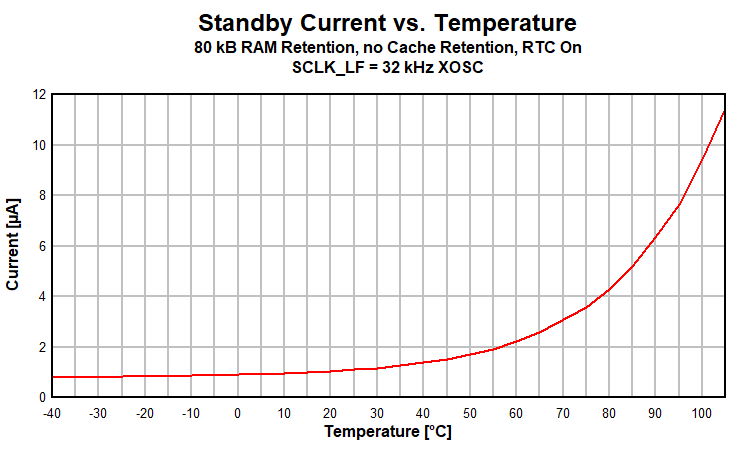SWRS196I January 2018 – February 2021 CC1352R
PRODUCTION DATA
- 1 Features
- 2 Applications
- 3 Description
- 4 Functional Block Diagram
- 5 Revision History
- 6 Device Comparison
- 7 Terminal Configuration and Functions
-
8 Specifications
- 8.1 Absolute Maximum Ratings
- 8.2 ESD Ratings
- 8.3 Recommended Operating Conditions
- 8.4 Power Supply and Modules
- 8.5 Power Consumption - Power Modes
- 8.6 Power Consumption - Radio Modes
- 8.7 Nonvolatile (Flash) Memory Characteristics
- 8.8 Thermal Resistance Characteristics
- 8.9 RF Frequency Bands
- 8.10 861 MHz to 1054 MHz - Receive (RX)
- 8.11 861 MHz to 1054 MHz - Transmit (TX)
- 8.12 861 MHz to 1054 MHz - PLL Phase Noise Wideband Mode
- 8.13 861 MHz to 1054 MHz - PLL Phase Noise Narrowband Mode
- 8.14 359 MHz to 527 MHz - Receive (RX)
- 8.15 359 MHz to 527 MHz - Transmit (TX)
- 8.16 359 MHz to 527 MHz - PLL Phase Noise
- 8.17 143 MHz to 176 MHz - Receive (RX)
- 8.18 143 MHz to 176 MHz - Transmit (TX)
- 8.19 143 MHz to 176 MHz - PLL Phase Noise
- 8.20 Bluetooth Low Energy - Receive (RX)
- 8.21 Bluetooth Low Energy - Transmit (TX)
- 8.22 Zigbee and Thread - IEEE 802.15.4-2006 2.4 GHz (OQPSK DSSS1:8, 250 kbps) - RX
- 8.23 Zigbee and Thread - IEEE 802.15.4-2006 2.4 GHz (OQPSK DSSS1:8, 250 kbps) - TX
- 8.24 Timing and Switching Characteristics
- 8.25 Peripheral Characteristics
- 8.26 Typical Characteristics
- 9 Detailed Description
- 10Application, Implementation, and Layout
- 11Device and Documentation Support
- 12Mechanical, Packaging, and Orderable Information
8.26.1 MCU Current
 Figure 8-4 Active Mode (MCU) Current vs.
Figure 8-4 Active Mode (MCU) Current vs.Supply Voltage (VDDS)
 Figure 8-5 Standby Mode (MCU) Current vs.
Figure 8-5 Standby Mode (MCU) Current vs.Temperature
 Figure 8-6 Standby Mode (MCU) Current vs.
Figure 8-6 Standby Mode (MCU) Current vs.Temperature (VDDS = 3.6 V)